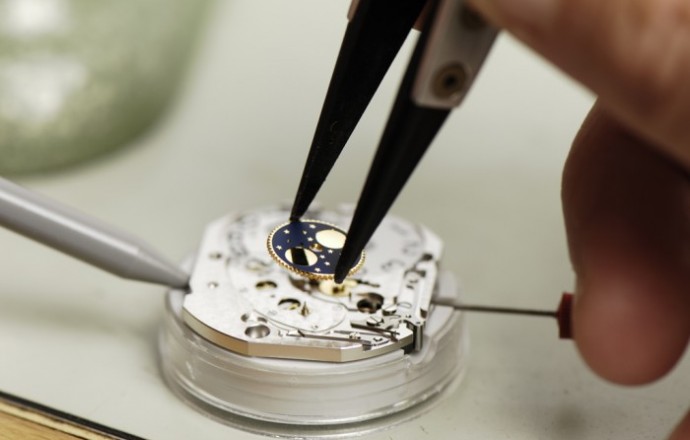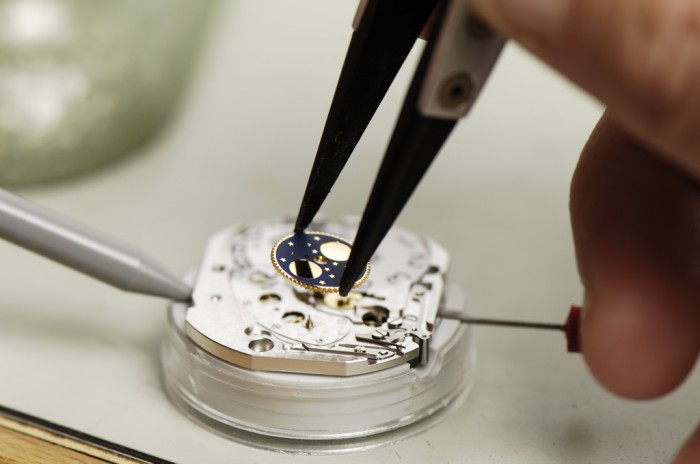Like to wear watches, and do you know how to fix it?
Watch repair tips include the basic steps to determine if a wristwatch needs a temporary repair or has experienced a major meltdown. Watches function best when they’re clean, and a regular yearly cleaning is highly recommended for all watches, even vintage Popeye timepieces.
You’ll need a few items to perform these watch repair tips, including;
replacement battery
pressurized air
magnifying glass
super fine sandpaper
1. Change the battery. If the watch is a quartz, the most frequent watch repair tip is to test the battery. Don’t assume that since a battery is relatively new that it couldn’t be the problem a watch has stopped working. Unless you buy the battery replacements at a store with an extremely large turnover in battery stock, an older battery might have been used to replace the dead one.
2.Check the battery contacts. Another simple watch repair tip is to check the contacts on the battery and on the watch to make sure dust or dirt isn’t causing problems with the connection. You may need a magnifying glass to do this. The battery may not be seated tight against the contacts so the watch doesn’t work. To test the contacts, take out the battery and rub the contacts with a clean cloth. If you can see gunk on the connections, take a small piece of extremely fine sandpaper and rub the contact to clean any dirt off the connection. This should do the job. Replace the battery and back.
3.Dry the works with a hairdryer. You may love tropical weather, but your watch doesn’t. It also hates really cold, icy weather and doesn’t much like the rain and damp. That leaves a lot of weather conditions for watches to temporarily stop. This watch repair tip is good for battery-operated watches, self-winders and traditional wind watches. Look at the watch face and crystal. If you can see any condensation in the watch, there is major trouble. If nothing obvious is on the face, take the back off the watch and look inside. If there is evidence of moisture, try using a hairdryer set on a low, cool setting to dry the works and case. Remove the works from the case and with the clean cloth, lightly blot the inside to remove any moisture. Let the watch sit out for the night with a light cloth tent over both the case and works. Replace the guts and back the next day and test the watch. If you discovered moisture and the watch still doesn’t work after drying, you’ll need to take the watch to a professional. Keep watches away from the kitchen, bath and car dashes in warm weather where condensation is likely to happen.
4.Add a blast of fresh air. Unless you’re wearing a factory-sealed Rolex Oyster, the inside of your watch is exposed to lots of dust each day. Watches should be cleaned at least once a year, but in between, take a can of air and give the case a quick, light blast to help keep out dirt. Avoid blasting the works, since this could damage the working mechanisms.
5.Check the case and any seals. A watch is designed to work with protection from a case. If your watch is routinely bumped during the day, check the case to see if this is the cause of the problem. Vintage windups have watch crowns, the winder thing on the top of the watch, that can be bent or completely broken off with rough wear. Newer watches, especially timepieces that are advertised as waterproof, incorporate the use of seals and a tight screw system that holds on the back of the watch. When the seals, back or crystal is bumped, the seal is broken and the watch doesn’t work properly. It may even stop to let you know a minor disaster has happened. For broken crowns, there is not much you can do to repair the damage yourself. For modern watches, however, a watch repair tip includes carefully taking the watch apart and putting in the crystal, works, seals and back in place..


